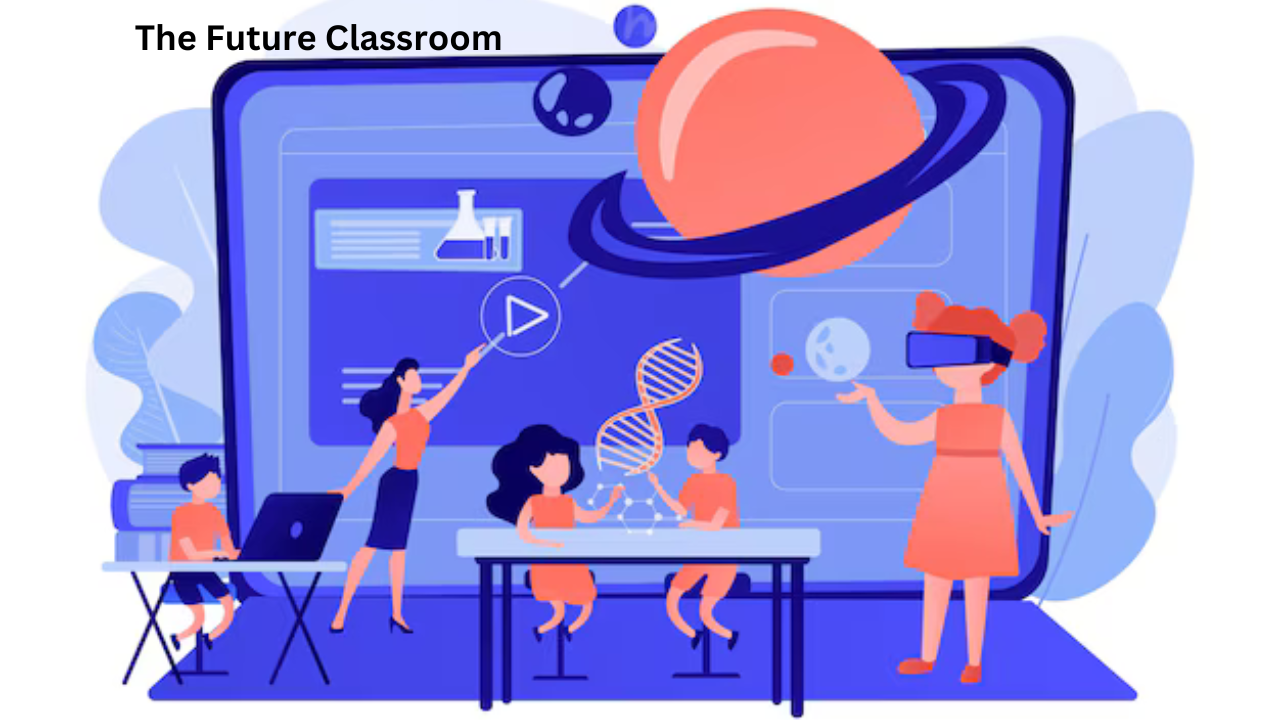Title: “The Future Classroom Unveiled: Innovations in Educational Technology”
Introduction:
In an era defined by rapid technological advancement, the landscape of education is undergoing a profound transformation. Traditional classrooms are evolving into dynamic learning environments, powered by innovative educational technologies. This article delves into the forefront of educational innovation, exploring how emerging technologies are reshaping the future classroom experience.
- The Evolution of Educational Technology:
- A brief history of technology in education.
- The paradigm shift towards digital learning.
- Key milestones and breakthroughs in educational technology.
- Virtual and Augmented Reality in Education:
- The potential of VR and AR to create immersive learning experiences.
- Applications of VR and AR in subjects like science, history, and art.
- Overcoming challenges and barriers to widespread adoption.
- Artificial Intelligence and Personalized Learning:
- How AI is revolutionizing education through personalized learning pathways.
- Adaptive learning systems that tailor content to individual student needs.
- Ethical considerations and concerns surrounding AI in education.
- Gamification and Learning:
- Harnessing the power of gamification to engage students and enhance learning outcomes.
- Examples of educational games and platforms that promote active learning.
- Balancing entertainment with educational objectives in gamified learning experiences.
- Interactive Whiteboards and Collaborative Tools:
- The evolution of interactive whiteboards from traditional blackboards.
- Collaborative tools and platforms for real-time student interaction and engagement.
- Enhancing group projects and peer collaboration in the digital classroom.
- Flipped Classroom Models:
- Redefining the traditional classroom structure through flipped learning approaches.
- Empowering students to engage with content outside of class and utilize class time for active learning.
- Success stories and best practices in implementing flipped classroom models.
- Mobile Learning and Bring Your Own Device (BYOD) Policies:
- Leveraging mobile devices as powerful learning tools in and out of the classroom.
- BYOD policies and strategies for managing device integration in education.
- Ensuring accessibility and equity in mobile learning initiatives.
- Cloud Computing and Accessible Resources:
- The benefits of cloud computing for storing and accessing educational resources.
- Collaborative platforms for sharing lesson plans, resources, and student work.
- Addressing concerns about data privacy and security in the cloud.
- Remote Learning and Blended Learning Environments:
- The rise of remote and blended learning models in response to global events.
- Strategies for creating effective virtual classrooms and maintaining student engagement.
- Balancing screen time with offline activities for a well-rounded learning experience.
- Teacher Training and Professional Development:
- The importance of equipping educators with the skills and knowledge to leverage technology effectively.
- Professional development programs and resources for integrating technology into teaching practices.
- Fostering a culture of lifelong learning and innovation among educators.
Conclusion:
As we peer into the future of education, it’s clear that technology will continue to play a central role in shaping the classroom of tomorrow. By embracing innovative educational technologies and reimagining traditional teaching methods, we can create dynamic learning environments that inspire curiosity, foster creativity, and empower students to thrive in the digital age.
